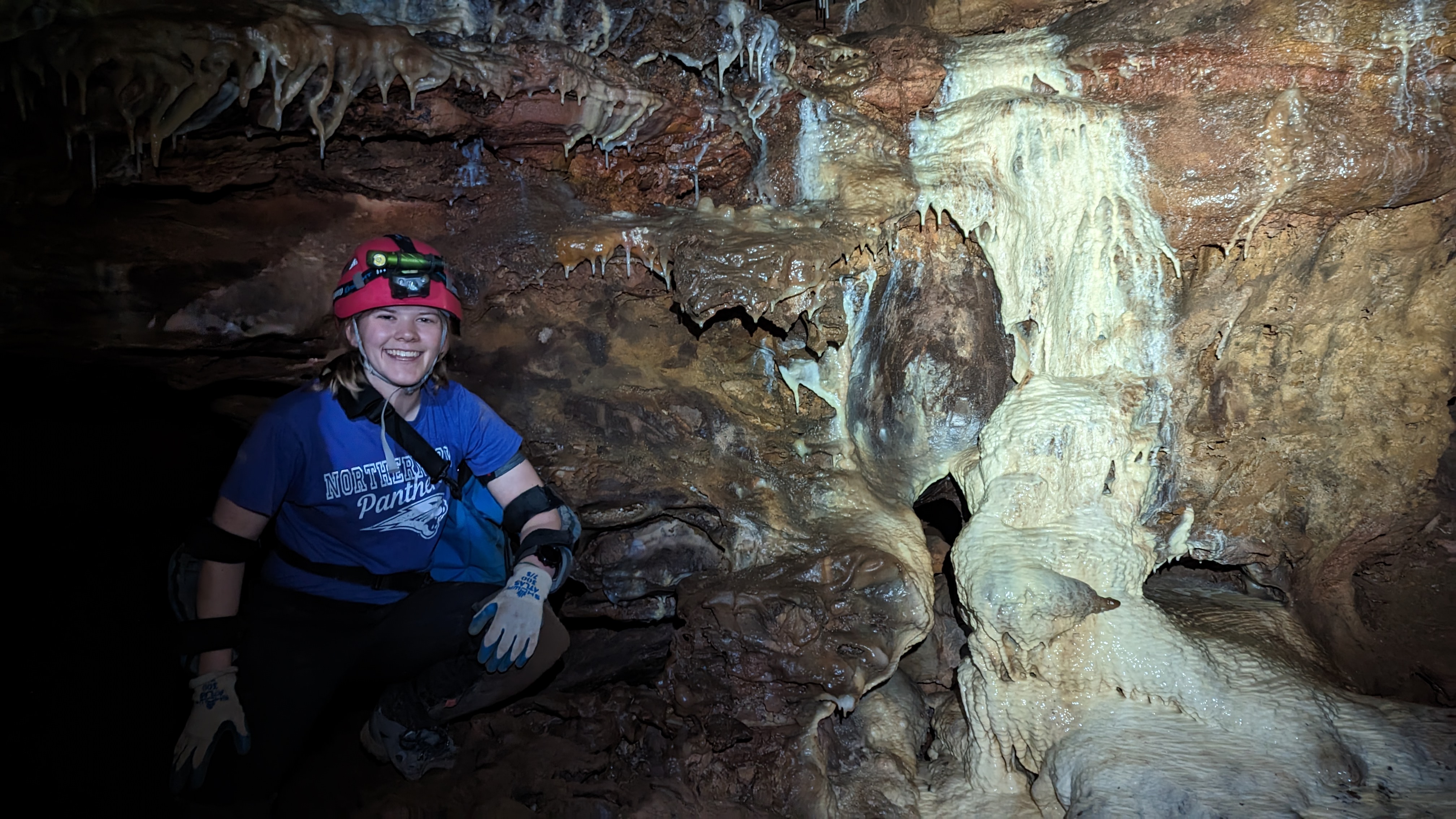UNI’s NASA-funded research in fluorescent caves could shed light on life beyond earth
UNI’s NASA-funded research in fluorescent caves could shed light on life beyond earth

CEDAR FALLS, Iowa – A team of University of Northern Iowa researchers is exploring some of the deepest caves in the United States to uncover secrets about life in extreme environments — and their findings could inform the search for life on other planets. UNI students involved in this research presented at the American Chemical Society spring meeting in San Diego, alongside about 12,000 presentations from researchers across the globe.
Led by UNI chemistry and biochemistry professor Joshua Sebree, the team has been using ultraviolet light to examine mineral formations in South Dakota’s Wind Cave and other subterranean locations. Under black light, the seemingly ordinary cave walls reveal vibrant hues of pink, green and blue, caused by chemical “fossils” embedded in the rock. These glowing patterns are providing new insight into how life and water once interacted deep underground — and could indicate how life might exist in places like Jupiter’s moon Europa.
“The purpose of this project as a whole is to try to better understand the chemistry taking place underground that’s telling us about how life can be supported,” Sebree explains.
UNI students are playing a major role in this research, gaining hands-on experience in fieldwork, data analysis and even instrumentation development.
Some of the UNI students contributing through specialized projects include:
- Jacqueline Heggen, who is exploring caves as simulated environments for studying microorganisms that can survive in extreme environments.
- Jordan Holloway, who is developing autonomous spectrometers, which could be used on future extraterrestrial missions.
- Celia Langemo, who is researching biometric data collection to improve safety for scientists exploring extreme environments.
- Anna Van Der Weide, who is building a publicly accessible database of the fluorescence fingerprints to help provide more information for the traditional cave map and paint a more complete picture of its history and formation.
Sebree’s crew has already produced significant discoveries. In Wind Cave, the team found that manganese-rich water helped form unique striped zebra calcites that glow pink under black light. These findings could shift current understanding of how caves form and expand.
The research is supported by NASA and the Iowa Space Grant Consortium.




